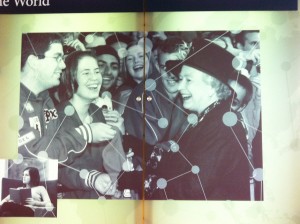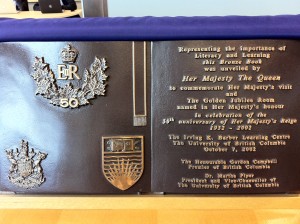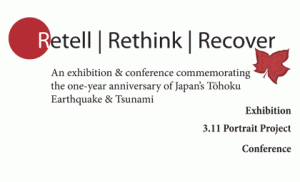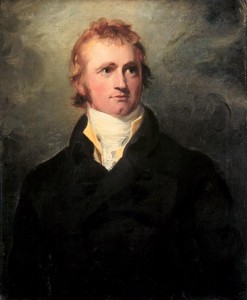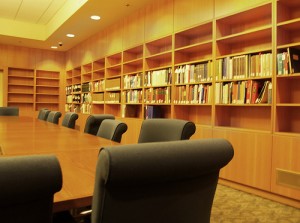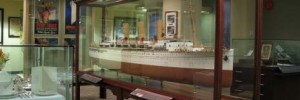The Bralorne Reading Room (room 490 in the School of Library, Archival, and Information Studies, Irving K Barber Learning Centre) is named after the town of Bralorne, a gold mining community in the Bridge River District, 125 kilometers west of the town of Lillooet.

Image credit: Bralorne minesite on the Cadwallader creek, 1935 (courtesy Bralorne-Pioneer Museum)
In 1897, three gold prospectors staked claims at what became the Bralorne Mining site: the Lorne, Marquis, and the Golden King claims. From 1897 to 1931, various people worked in the mines. Among those people was Arthur Noel, a prospector and his wife, Delina. Together, they owned and worked in the Lorne mine from 1916 to 1928, making $160,000 (
Bralorne-Pioneer Museum)
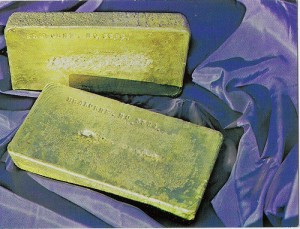
Image credit: Bralorne gold bricks (courtesy Bralorne-Pioneer Museum)
In 1931, the mine was purchased by Bralco Development and Investment Company. Austin Cottrell Taylor, the owner of Bralco, renamed the mine Bralorne mine. From March 1932 to 1971, the mine, made up of the Bralorne, King and Pioneer mines, was “the largest historic gold producer in the Canadian Cordillera producing 4.1 million ounces of gold” (
Bralorne Gold Mine Ltd.).

Image credit: Bralorne-Pioneer Gold Mine History (courtsey of Bralorne Pioneer Museum Flickr Photostream)
During the 39 years that the mine was in operation, a large town developed to support the hundreds of people who worked in the mine. There are a number of publications in the UBC Library collection on Bralorne (see, for example, Bridge River Gold), however, the Bralorne Pioneer Museum offers the best selection of resources. It was formed in 1977 with the mandate to preserve the history of the Bridge River Valley which consists of several small communities: Bralorne, Gold Bridge, Gun Creek, Gun Lake, Tyax Lake and Marshall Lake.
If you are unable to visit the museum in person, check out the Bralorne-Pioneer: Their Past Lives Here, a virtual exhibit that is part of the Virtual Museum of Canada website. Using photographs and stories, this virtual exhibit explores the history of Bralorne from the first discovery of gold in the Bridge River valley in the 1860s to the closing of the mine in the 1970s. The Virtualmuseum.ca website, a collaboration between Canadian museums and the Canadian Heritage Information Network (CHIN), includes 500 virtual exhibits promoting the content of Canadian museums and a gallery of 680,000 images drawn from Canadian museum collections.
Today, only a small number of people live in Bralorne. However, this may change, as the Bralorne Gold Mine was re-opened on May 27, 2011. Bralorne Gold Mines Ltd. is exploring and developing the between the historic Bralorne, King and Pioneer gold mines.
